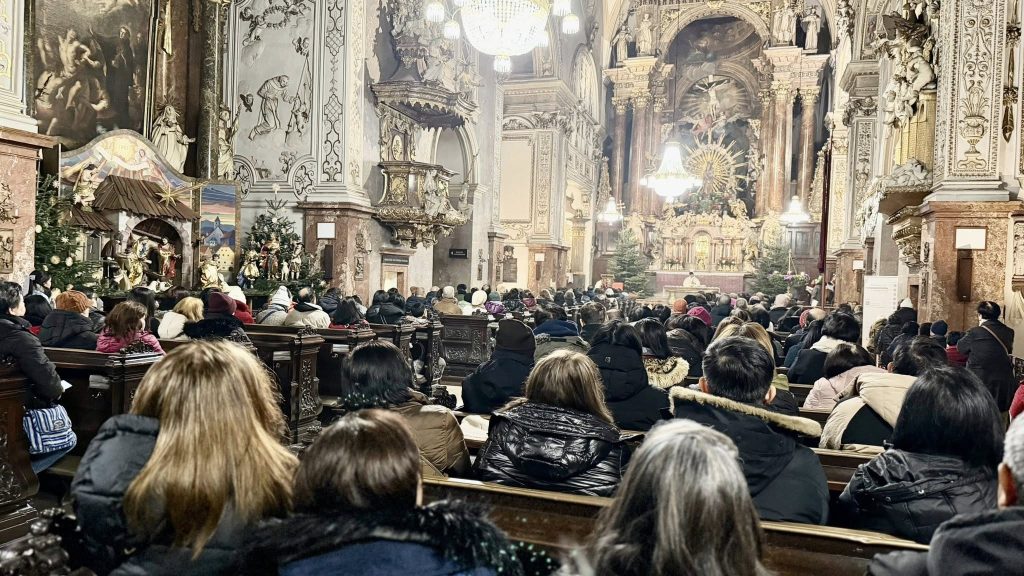The Donauradweg is a classic among the cycling trails. And even in the run-up to our cycling trip, we had heard many good things about this tour on the second-largest river in Europe. Accordingly, our anticipation was incredible. Since the Donauradweg is also super marked in Austria, it is practically possible to go.
There are three stages of the Danube Road from Vienna to Passau. To our pleasure, Julian, Rudi, and I could roll off on August 21, 2023!
The Danube road to Passau 1st stage – 21 August 2023 – 128.2 km.
Vienna Korneuburg – Tulln an der Donau – Langenschönbichl – Pischelsdorf –– Kleinschönbychl – Zwentendorf am Donau – Altenwörth – Krems an der Danube – Dürnstein – Weißenkirchen in der Wachau – Spitz – Aggsbach – Emmersdorf an der Dunne – Klein-Pöchlarn
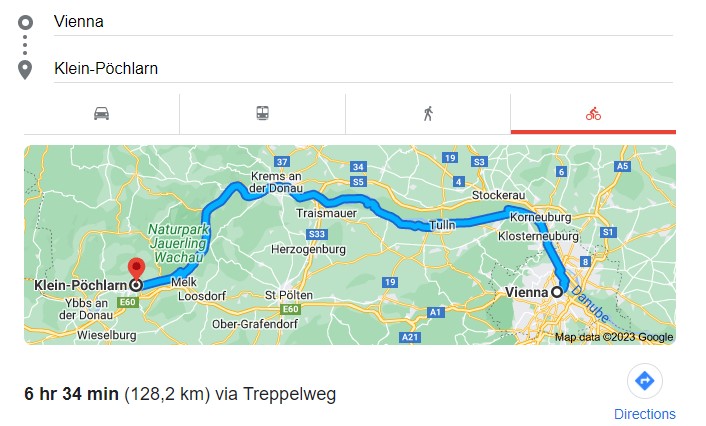
At about 9 o’clock, we met at the Nordbrücke. After a brief meeting, we moved to the west with full enthusiasm. We reached Tulln on the Danube after about 2 hours. Tulln is a slightly larger city known as a garden and flower city.
After Tulln, we noticed that more was happening on the cycle path. Race cyclists, tourists, cycling tourists like us—everyone was on the go. And the way was great and fast to drive.


When we arrived in Krems, the sight of Stift Göttweig accompanied us for some time on the right bank of the Danube. After that, we switched routes and rode over the Mautner bridge to the left bank of the Danube.
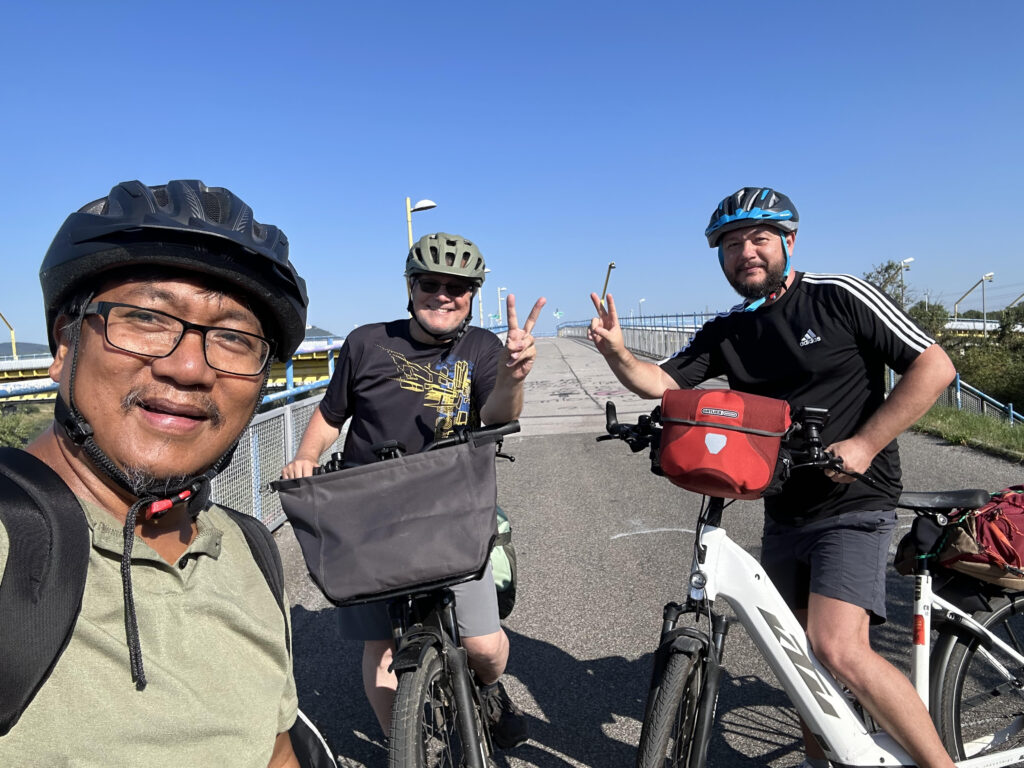
After the Niebelungen town of Pöchlarn, the cycling path continues through the asphalt to Melk. Here, the Wachau starts, which is a UNESCO World Heritage Site. In addition to the world-famous wine, this region is known for its incredible landscape. The impressive „Stift Melk“ can also be admired here.
A bridge connects Melk with the destination of today’s cycle stage – Klein Pöchlarn.
We were happy and satisfied and looking forward to the next step leading us to the capital of Upper Austria – Linz!
2nd stage – 22 August 2023 – 91.7 km
– Klein Pöchlarn – Marbach an der Donau – Ybbs an der Danube – Hirtschenau – Grein – Dornbach – Mauthausen – Steyregg – Linz
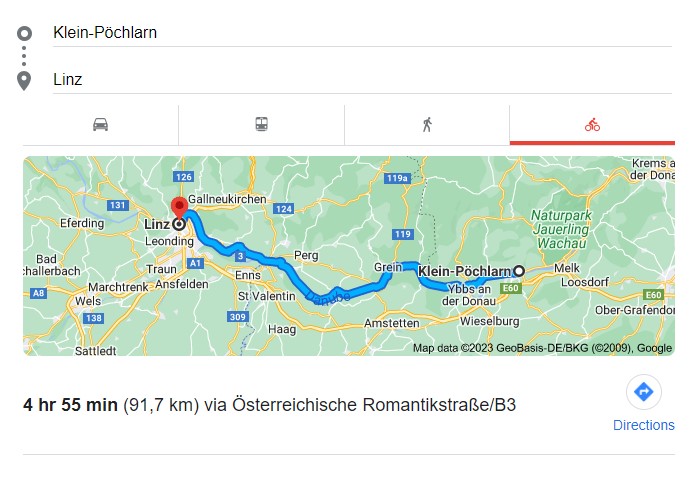
After breakfast in a guest hotel in Klein Pöchlarn, we continued towards Ybbs an der Donau.
It’s very idyllic here. You drive through the forest, and the next destination is the beautiful town of Grein near Mauthausen. The path is still super expanded. There are only small towns left, including Steyregg.
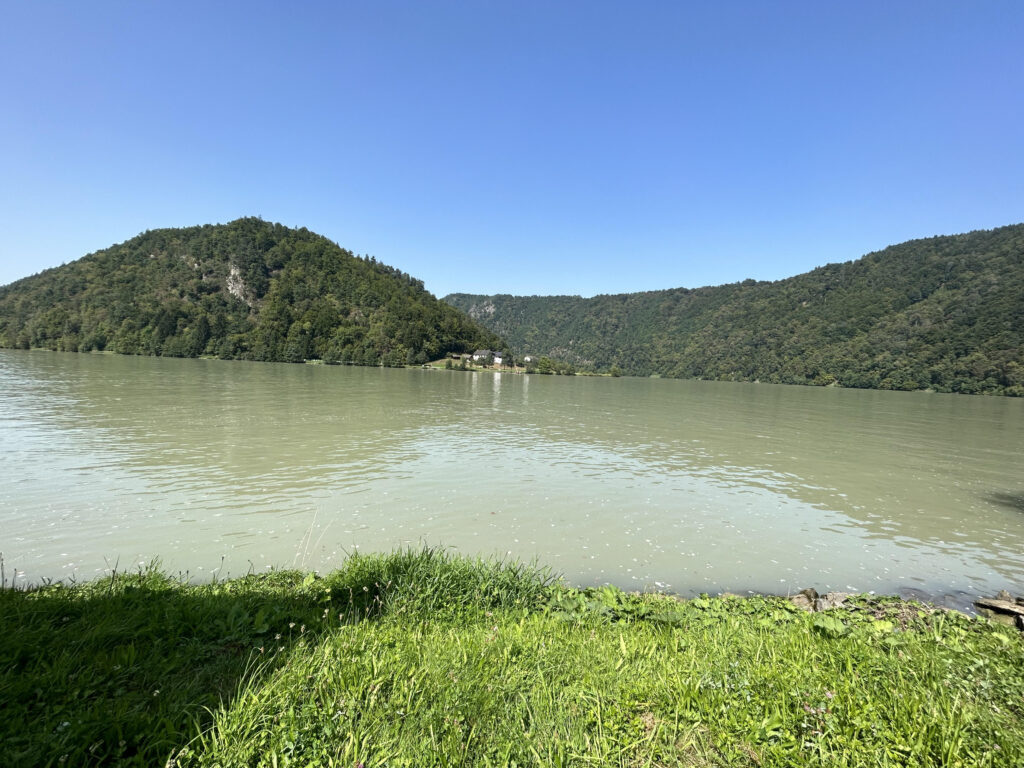
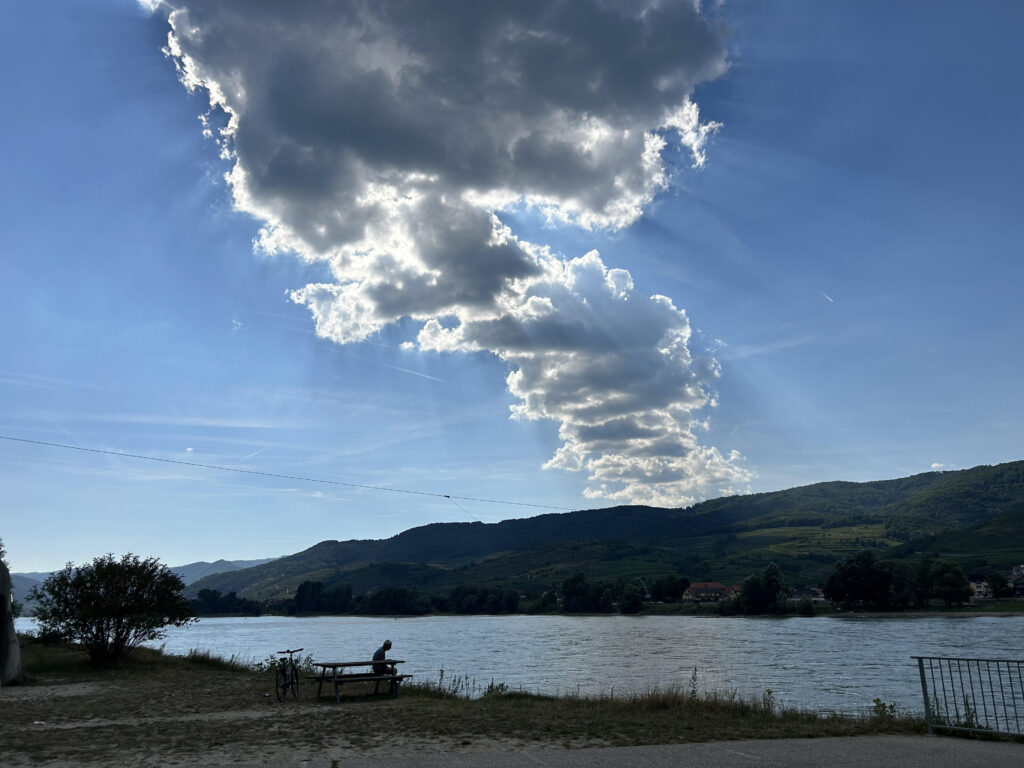
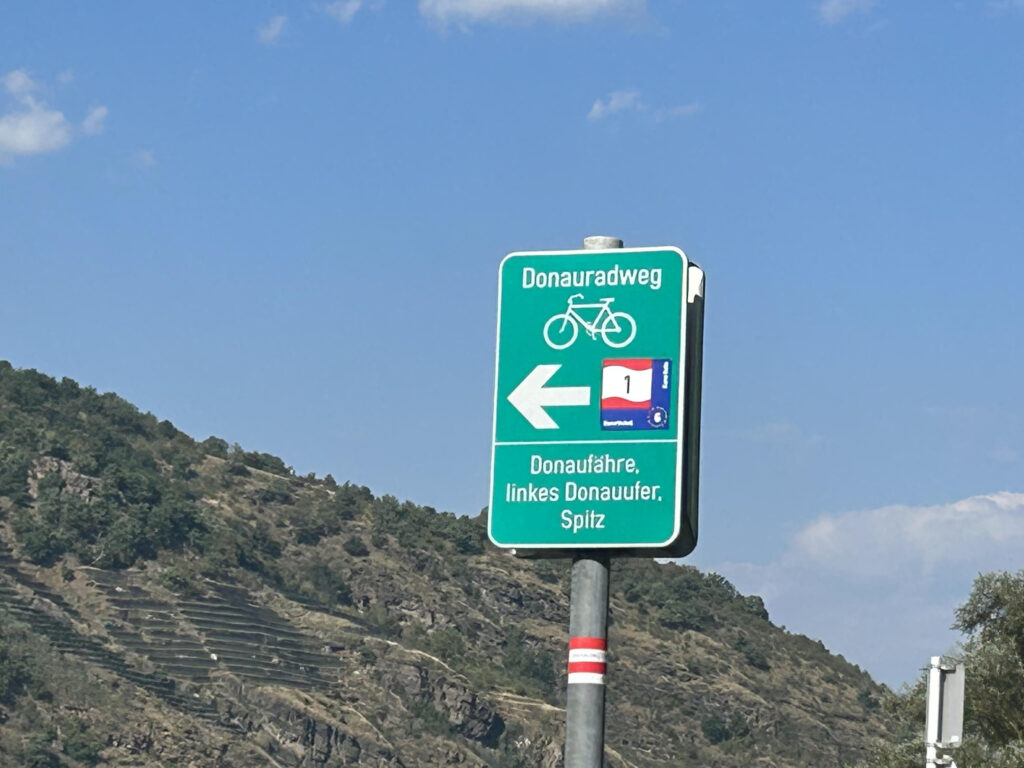
Since 2000, the Wachau has been a UNESCO World Heritage Site. The climate here is mild, and in addition to the countryside, it is also fun to drive through the small villages with narrow streets, even if you do not progress so fast. In addition to wine, a lot of fruit is grown here. Especially famous are the Wachauer marillas, from which juice and jam are made.

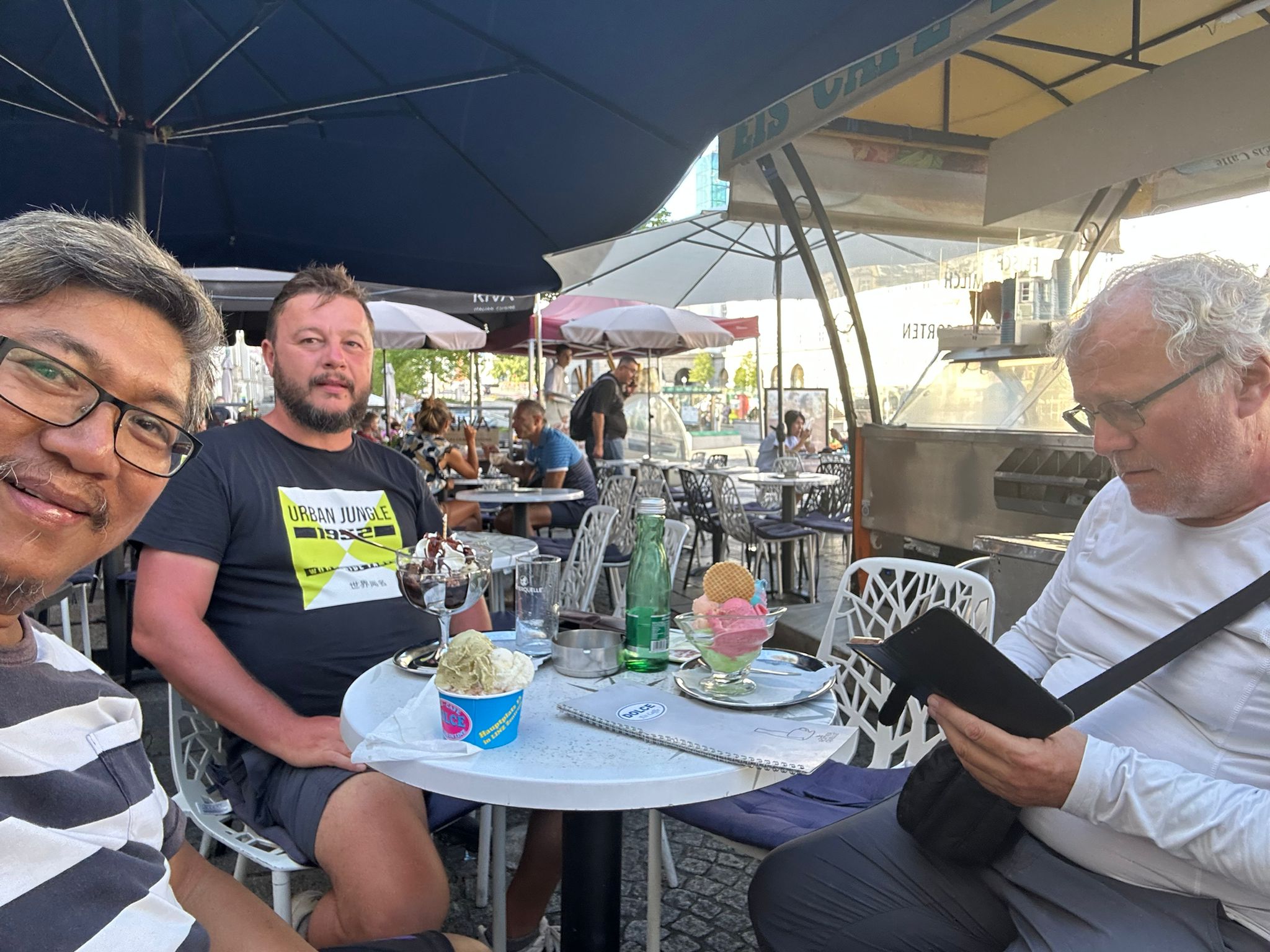

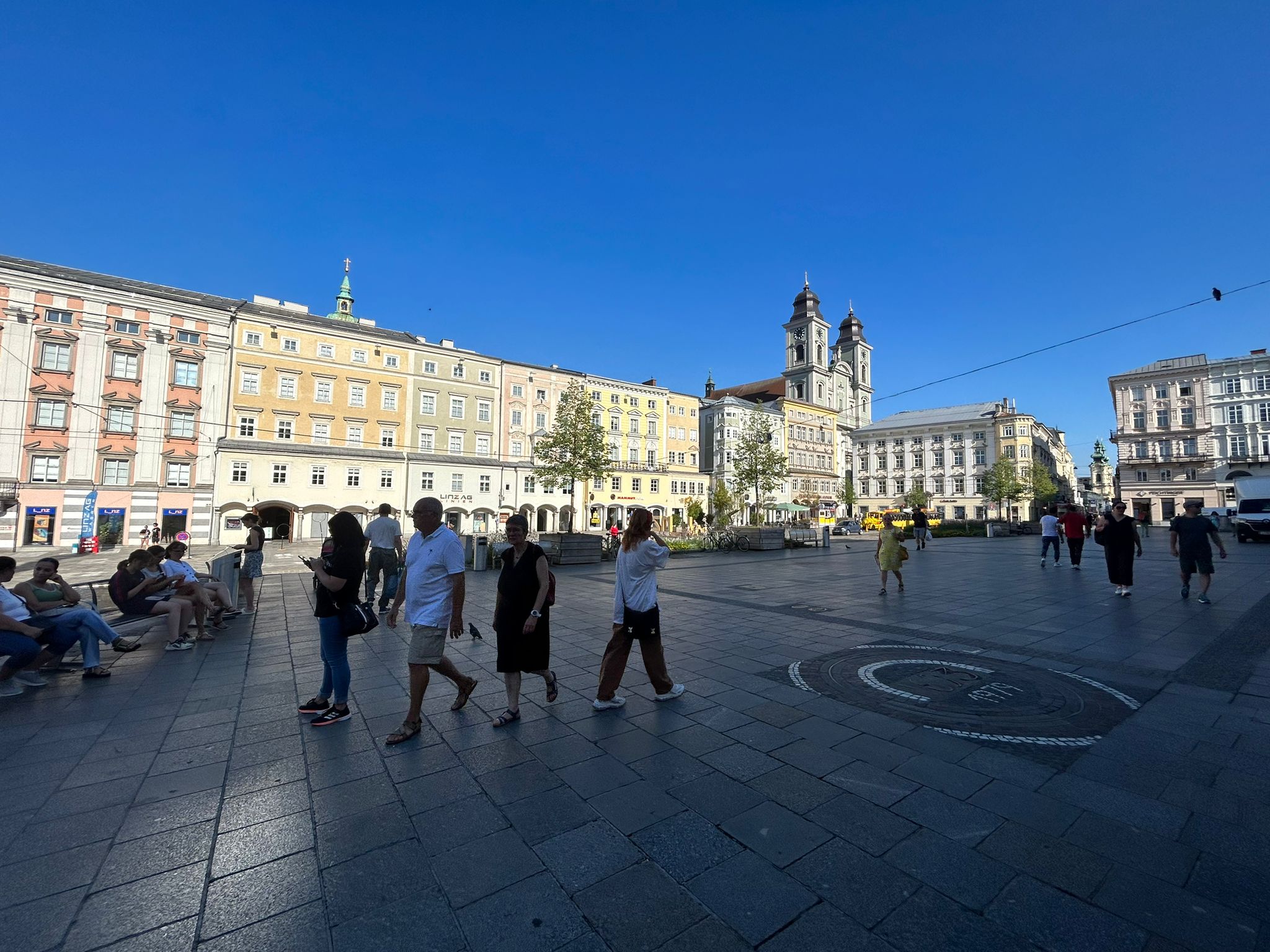
After a relatively long break in Mauthausen, we headed to Linz. To reach Mauthausen, you drive a bit more directly on the Danube. The bike path here is excellent; you can get right into the pedals. We wanted to win time and, above all, have fun.
We decided to finish the second stage in Linz.
In Linz, the cycling path is still very well-marked. But we had already left to get to the famous ice salon over the Nibelungen Bridge. From there, you have a lovely view of the old town. Linz was once considered a pure industrial and steel city, but it has made itself known as a cultural city worth seeing.
3rd stage: 23 August – 96.9 km
– Linz – Puchenau – Ottensheim – Field Churches on the Danube – Aschach on the Donau – Obermühl on the Danube – Engelhartzell on the Dunava – Obernzell – Passau
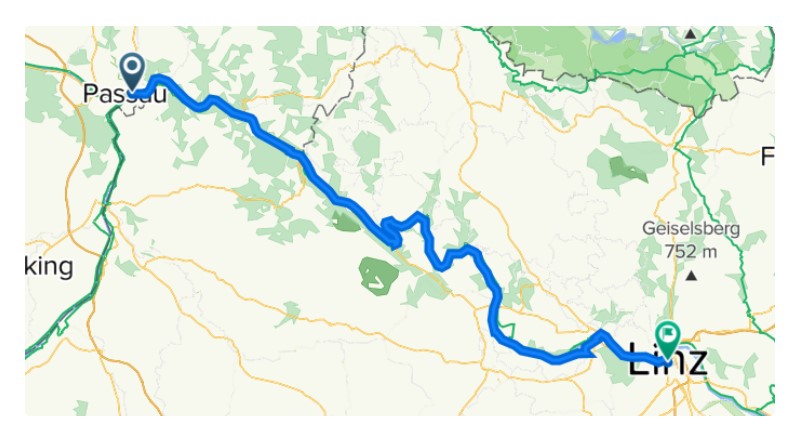
The next day, Thursday, we got up from our hotel bed earlier than usual and continued our bicycle trip to finally reach our destination, Passau. At 9 o’clock, we started our last stage.
From Linz, we travelled across Aschach on the Danube. After Inzell, we had a short stay in Schlögen. A lot of forest surrounds the cycling path. At the same time, there are well-accessible asphalt paths and a beautiful view of the Danube.



This part of the Danube Route is a true spectacle. You will pass the „Schlögen Schlingen, “ considered a natural miracle.
We have left the Danube for some time and made a tranquil snorkelling trip over field churches. We see this as a successful change. Then, the Danube route leads us back to the river. How vast the Danube is here; that’s just wild! That’s 400 metres. The approximately 2 km long section from Dürnberg to Puchenau is not so beautiful. We learned that we have been almost without traffic and have been wheeled through nature. Now, it went along a busy federal road, and the crash of the trucks irritated me enormously.
We should have crossed the Prince Regent-Luitpold Bridge. We decided to continue on the right side of the Danube. From here, we reached Jochenstein. A small bike path led us to the power plant and, simultaneously, the border crossing to Germany! The first of 10 power plants on the Austrian Danube is a joint project between Germany and Austria. It also supplies electricity to both countries.
Having arrived in Germany, we travelled almost all the time through smaller places, which is practical. Because you have very little traffic and you make good progress.
After the border, you first drive on a road between the forest and the Danube. That’s super beautiful.
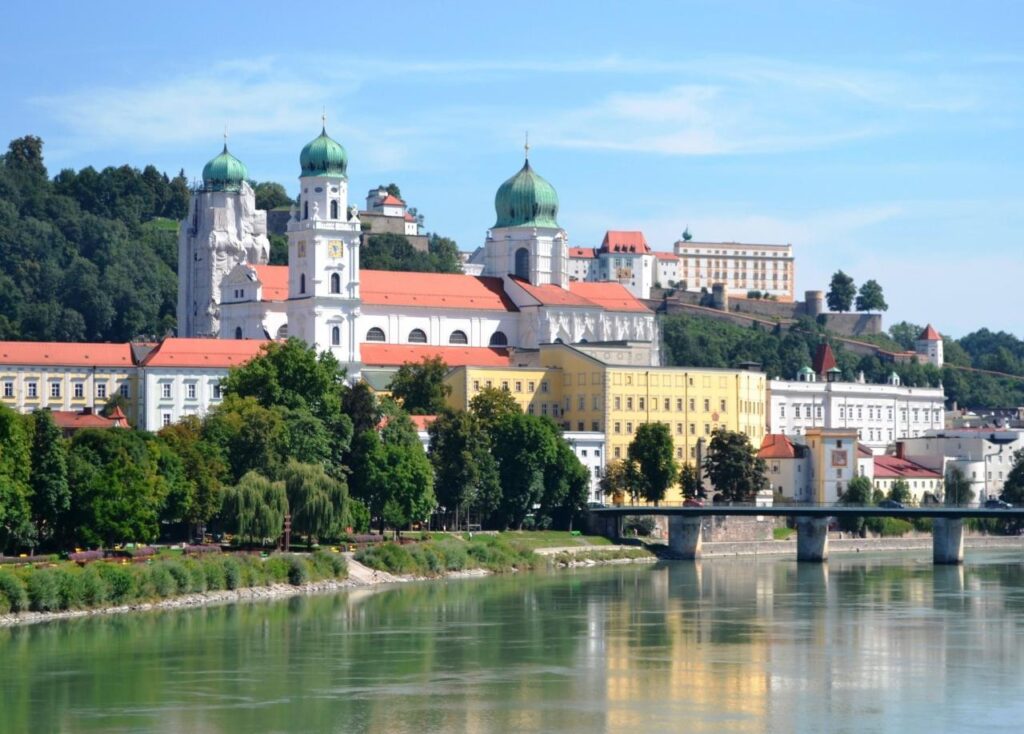
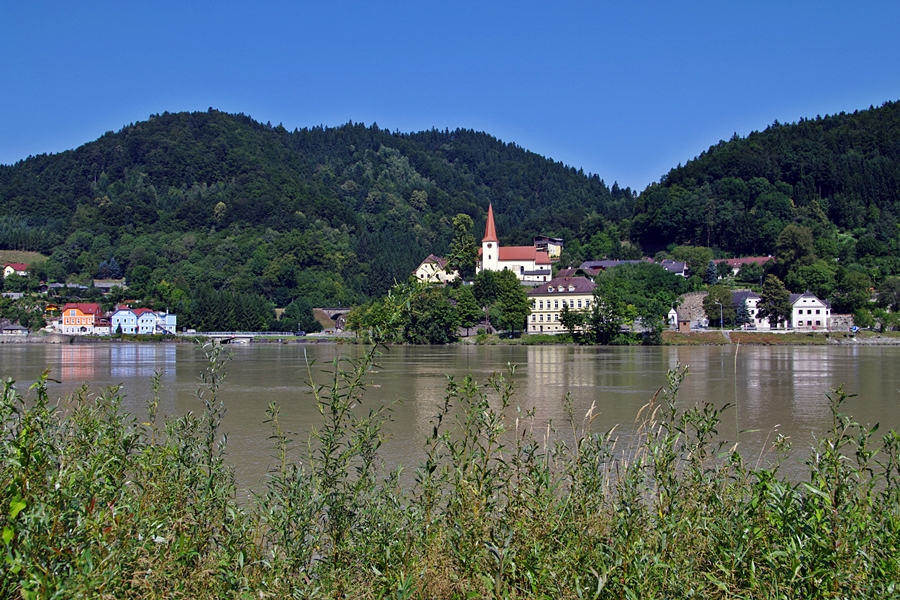
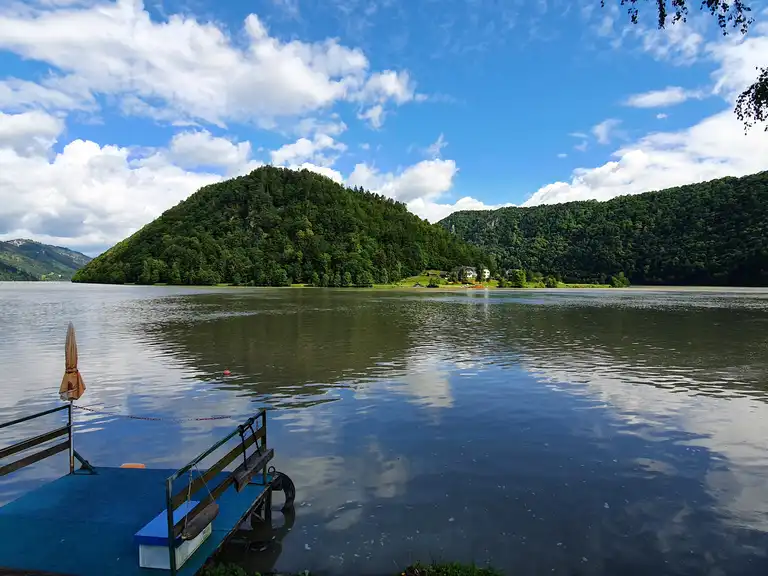
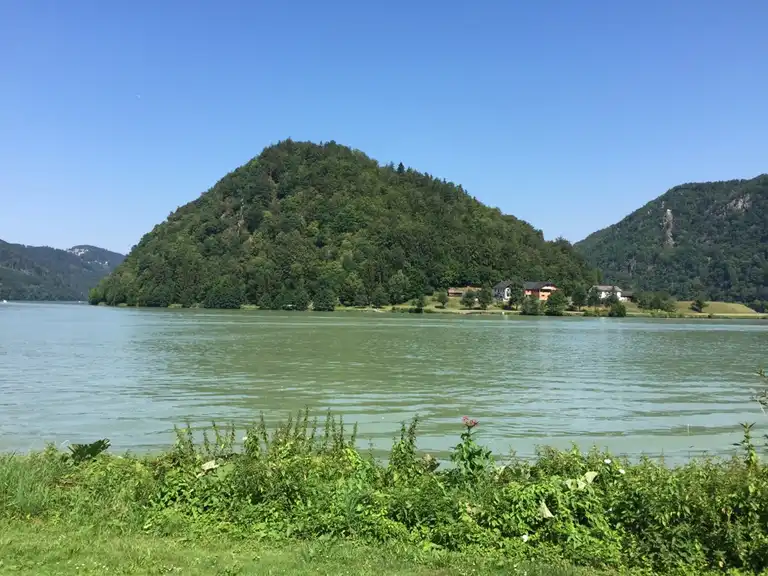

At exactly 17:15, we reached the old town of Passau. We crawled over the baroque old town’s stone stables past churches that remind us of the history of Passau as an essential diocese in the Holy Roman Empire. We also visited St. Stephan, one of the most giant domes north of the Alps, known for the world’s largest Domorgel.

We took the train back to Vienna at 18.45 (with a 15-minute delay).
We did it—320 kilometres in 3 days.
My personal most beautiful parts of the cycling tour Who is considering only one part of the Danube cycle path, which, in my opinion, was the most beautiful trail:
• The route from Ottensheim to Schlögen, especially the section between Ottenheim just before Ober-/Untermühl, was pleasant.
• The route from Emmersdorf to Krems on the Danube through the Wachau on the north bank. I liked the section between Spitz and Weissenkirchen the best.
The Danube Road is completely paved. There are hardly any slopes. If the road runs on a federal highway, it usually has a wheel strip. Very often, this is also structurally separated from the road.
When cycling from Vienna to Passau, one becomes aware of the violence of nature and man.
Naturally, in recent years and centuries, the Danube has crossed its shores several times and caused devastation, most recently to a large extent during the Flood of the Century in 2002. As a result, in the Upper Austrian Machland, a 30-kilometre-long shelter dam for about 1,000 houses has emerged; five villages have been more or less orphaned, and the inhabitants have left their homes. These villages are now flooding space for the river – nature has recaptured its area in a rare case.
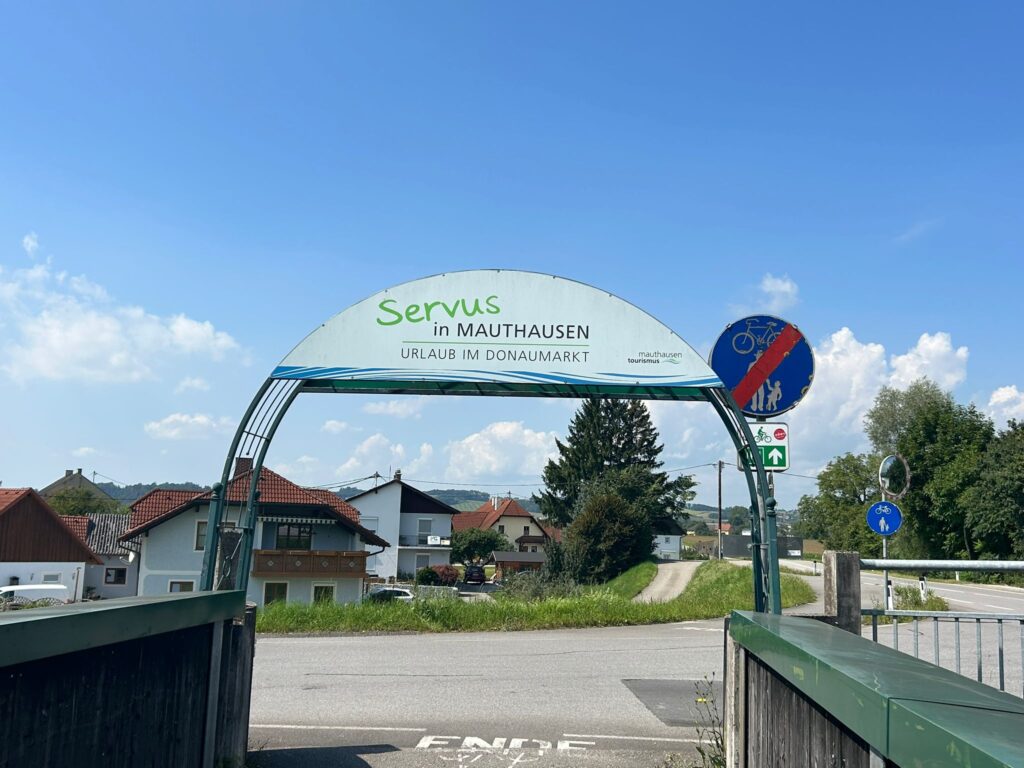
And people, because in Mauthausen, about 20 kilometres behind Linz, you can turn around and visit the concentration camp where more than 100,000 people were murdered.
- Hector Pascua
This post has already been read 1979 times!



